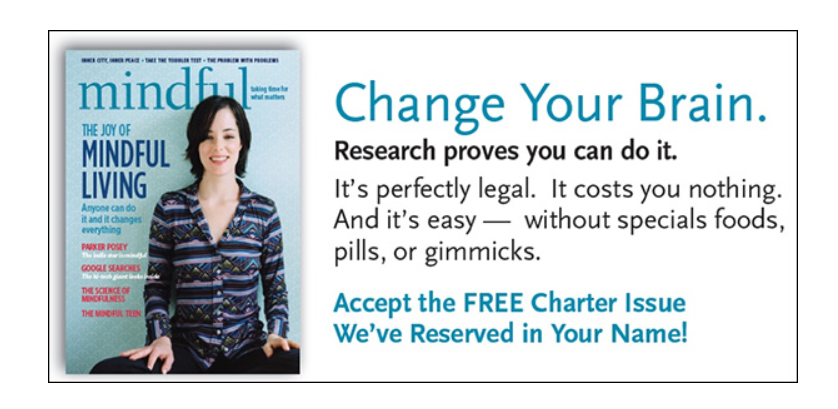
Writing Effective Sales Letters and Emails: How to Keep Your Prospects from Trashing Your Correspondence
R.E.A.D.A.B.I.L.I.T.Y
It’s one of those strange words that sounds like your 5-year-old made it up by mistake But, it's actually in the dictionary. Here’s the definition.
Readability (rē-də-ˈbi-lə-tē): the quality of being legible or decipherable.
Good definition. Now, here is how we like to define readability.
Readability: What your content needs or else it will end up in the (virtual or actual) wastebasket.
While readability does have to do with making your content legible and easy to digest, the overall goal is to keep people reading and not discarding. Readability keeps your prospects exactly where you want them, reading your content (all of it) and taking action (becoming a lead or sale).
In this article series, we have been discussing how to craft high-converting sales emails and letters. If you haven’t read Parts 1-3, here they are again:
Part 1: Writing Effective Sales Letters and Emails: Write to Your Prospect
Part 2: Writing Effective Sales Letters and Emails: How to Format Like an Expert
Part 3: Writing Effective Sales Letters and Emails: A Simple, Low-Cost Strategy to Increase Your Conversions
In this final article in the series, we will discuss six ways to make your copy more readable and easier for prospects to digest, so they can keep reading and take action.
Use Short Sentences and Paragraphs to Keep Prospects Reading
If your sales email/letter is too complicated, your prospect will not read it.
In Part 2 of this article series, we introduced the concept of readability. We gave you a bulleted list of tips to apply to your content. Here they are again:
- Headings and sub-headings
- Visually-appealing imagery—befores and afters and images that display the “after” the prospect can expect when using your product/services
- Text boxes and callouts that draw attention to the content you want to stand out
- Bold/italicized text
- Bulleted/numbered lists
- Enough white space so the text isn’t bunched up too close together
In this article, we are continuing this conversation and discussing paragraph and sentence length. The idea here is to keep your paragraphs and sentences concise. If they are too long, your prospects will be bored and labor through your content (boring/labor = wastebasket).
Here’s a snippet of some content from an earlier part of this article series:
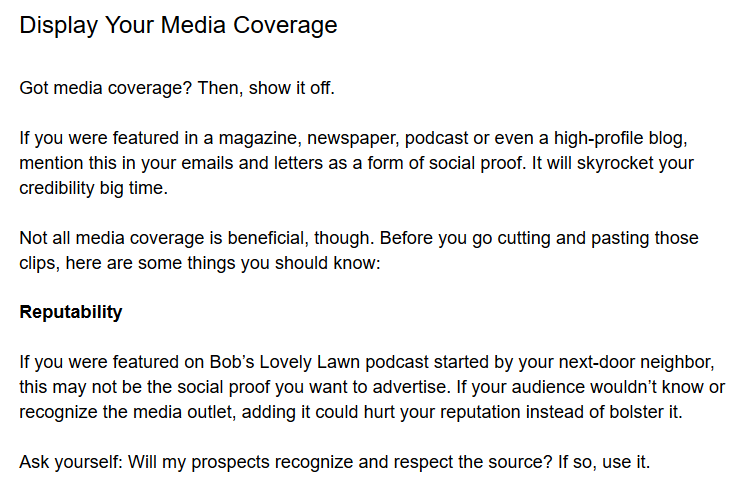
Now, here is that same snippet of content, but converted into a less readable form.
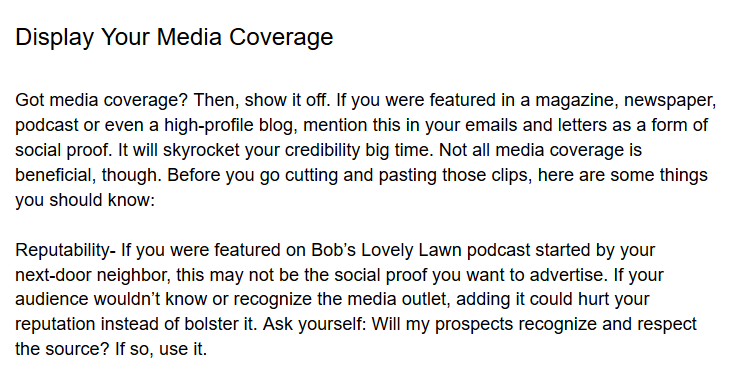
Go back and forth between the two examples. Which one is easier to get through?
The second one looks tiring, and it will take more effort to read. It also doesn’t include the bolded formatting that helps to break up the text.
Keep paragraphs to no more than three to four sentences and don’t add more than two to three of the same paragraphs of this size together. In the second example above, the second paragraph had four sentences (acceptable), but when placed next to the paragraph before, they both looked tiring to read. Include some one-sentence paragraphs to break up the longer paragraphs.
HIGH READABILITY TIP: After writing your content, step away from it for at least 8-12 hours and return with fresh eyes. Does it look easy to digest? Is it too complex to read? Scan through it and review it for readability. Adjust as needed.
Avoid wordy sentences
The same readability tips apply to your sentences. Sentences at about 14-18 words are easier to read than long, drawn-out ones.
Avoid long, wordy sentences like this one that go on and on and talk about the same thing over and over and over and don’t really get to the point or interest the reader whatsoever.
The key is to get to the point as quickly as possible and keep your sentences concise.
Here are two examples of the same sentence. Both say the same thing but the second one is more concise and easier to read.
Today, we are offering a special 20% off discount for you, our customers, for a limited time only for just 14 days, and ending on June 5th at midnight.
Now, let’s remove all unnecessary words and break it up into two sentences.
Get our special 20% off limited-time discount. The discount expires in 14 days, on June 5th at midnight.
Whether writing paragraphs or sentences focus on brevity.
How Readable Is Your Content? Test It Out
So how do you know if your content is readable? Get your Flesch-Kincaid Grade Level Test score.
The Flesch-Kincaid Grade Level Test analyzes the average sentence length and average number of syllables per word to check the content’s reading level. The key is to keep the content at an eighth-grade reading level so prospects can get through it easily.
Here's how to get your score using Microsoft Word.
To set up the test, go to the File tab >> Options >> Proofing
To enable the feature, make sure the “Check grammar with spelling” option is checked off and select “Show readability statistics.”
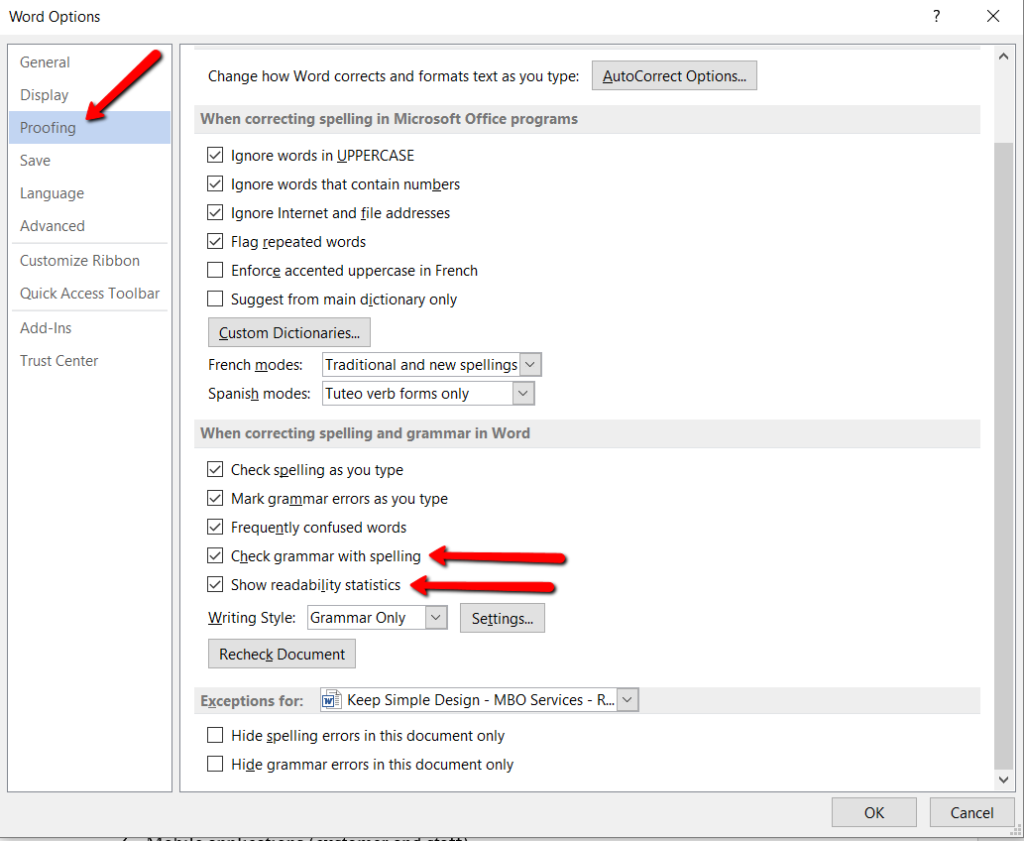
Next, open a Word file containing your content and perform a spelling/grammar check. Once Word finishes the review, you should see a pop-up like this:
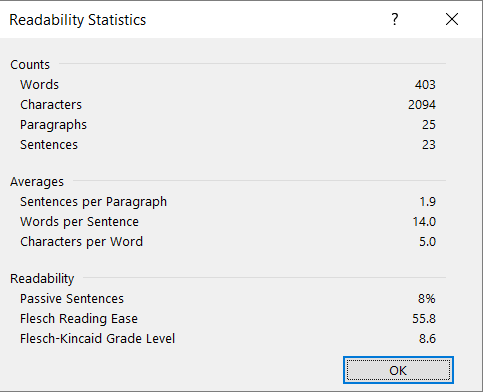
We recommend a Flesch-Kincaid Grade Level score of less than 8.0 for sales copy. This means an eighth grader can read and understand the content.
If the score is too low, however, the copy may be too choppy. Unless you are writing copy for an advertisement (the lower, the better), aim for a score of 5.0 – 8.0.
What does a super low KF score look like? Here’s an example of copy with a low KF score of 2.8:
This works well for an advertisement, but choppy sentences in an email are not ideal.
If your score is above 8.0, review the content and assess where you can shorten sentences and remove unnecessary words and clichés.
This Is Not the Time to Wax Eloquent; Stay Conversational
You may be fastidious with your content and enjoy idiosyncratic rhetoric, but I guarantee it will be unrequited.

“Ummmm…what?”
Did you have to read that sentence over and over to understand what it meant? (I’m an old English novel reader and I still had to piece that together with a dictionary).
Here’s the thing: You won’t impress your readers with 10-dollar words. But, you will turn them off.
Avoid super stuffy, impersonal, jargon-rich copy. To connect with your prospects, write in a personal tone that focuses on the prospect and their needs. Speak to them like you would if you were engaging with them verbally.
“Wait, isn’t that against everything I have ever learned in English class?”
Yup, you will be breaking grammar rules. But, this is okay (I’m apologizing to my college English professor in my head). Throw away those English textbooks This is not the time for formal, polished copy.
Keep the tone conversational so it feels more personal to the reader.
One way to do this is to write your copy as if you were conversing with loved ones or friends and urging them to take advantage of your product/service offer. Notice your inflections and conversational style and how it differs from formal content.
Note: I am not suggesting that you write exactly like you talk. The key here is to avoid formal writing.
To get an idea of what this looks like, reread this blog post. Notice where I start sentences with conjunctions (and and but) and “so,” and end with prepositions (how dare I!). I also add filler phrases like “here’s the thing” and ask questions to generate interest.
This keeps the content conversational and flowing along nicely, which makes it easier to read. But, it still is not as relaxed as a verbal conversation that may include words like “umm” and “like.” (Umm, did you like see that car drive out right in front of you?)
Also, use “you” and “I” (first and second person) liberally instead of the third person.
WRONG (third person)
Business owners should speak in a conversational tone if they want to increase conversions.
RIGHT (second person)
If you want to increase conversions, speak in a conversational tone.
Don’t overdo it
There is a balance here. Don't break too many rules or you may sound illiterate. You are a professional company after all, right? If you are unsure if your copy is too informal, get feedback from several colleagues.
Don’t Be Weak And Passive. Use Active Voice
Okay, so we told you to break some grammar rules in your sales emails and letters. But, this one, well…don’t break this one.
The reason is that active voice eliminates the need for unnecessary words, which increases readability (remember when we talked about this earlier?). Active voice also gets to the point right away and keeps the copy more engaging.
With active voice, the subject of the verb is performing the action.
John opened the door.
In passive voice, this sentence would read:
The door was opened by John.
The passive voice sentence introduced two unnecessary words (was and by). Passive voice is weak and lazy. Active voice is direct and gets right to the point.
When is it okay to use passive voice?
Using a few instances of passive voice will not be a game-changer. But, excessive use will make your piece less readable and more difficult to digest.
Check for Mistakes. Trust Me, You Got Em’
Conversational copy. Check.
Error-ridden copy. Epic fail.
So, earlier in this article, we told you to write in a more conversational tone and throw out some grammar rules. But, as I mentioned before, that doesn't mean to send out a piece riddled with grammar and spelling errors.
Here are some tips:
- Read your copy aloud and listen for missing words.
- Grammar and spell-check the document.
- Have someone else proofread the copy.
- Set aside the copy and return to it a day later with fresh eyes. You will notice mistakes you missed earlier.
- For best results, hire an editor.
Change Things Up. Keep Testing and Improving
You finished gathering your proof (read more about this in Part 3); you wrote and edited your sales email or letter; and you finally sent it out (whew!). Congratulations on making it this far. But, the reality is that this is only just the beginning.
With each mailing, you will gain valuable feedback, especially if your letters did not perform well. A typical response rate is 1-3% depending on the product price and other factors. If your response rate is lower than 1%, it may be a good idea to make some changes to see if you can get a better response.
If your sales email/letter did not perform well, here are some things to try:
- Dig into your target audience research more (we talked about this in Part 1 and 2) and review the language. Would your target connect with it? Are you using key phrases and language that will resonate with them?
- Test different headlines and sub-headlines (we discussed headlines in Part 2).
- Adjust your offer/bonuses/guarantee.
- Survey your list to find out what offers/guarantees would best suit them.
- Your audience could be too general. Break up your target audience into more focused segments, and write different email/letter versions to target each.
If your correspondence performs well, review it to assess what components were successful and send more of the same next time. You may also want to send a follow-up to the same list to capture any outliers who may not have seen your letter.
We Are Here to Help!
Hopefully by now you have a stronger grasp of how to write high-performing sales letters and emails. If you would like more help crafting a strong piece, feel free to reach out to us here.
And if you haven’t read all of the articles in this series, access them below:
Part 1: Writing Effective Sales Letters and Emails: Write to Your Prospect
Part 2: Writing Effective Sales Letters and Emails: How To Format Like An Expert
Part 3: Writing Effective Sales Letters and Emails: A Simple, Low-Cost Strategy To Increase Your Conversions
Happy writing!

